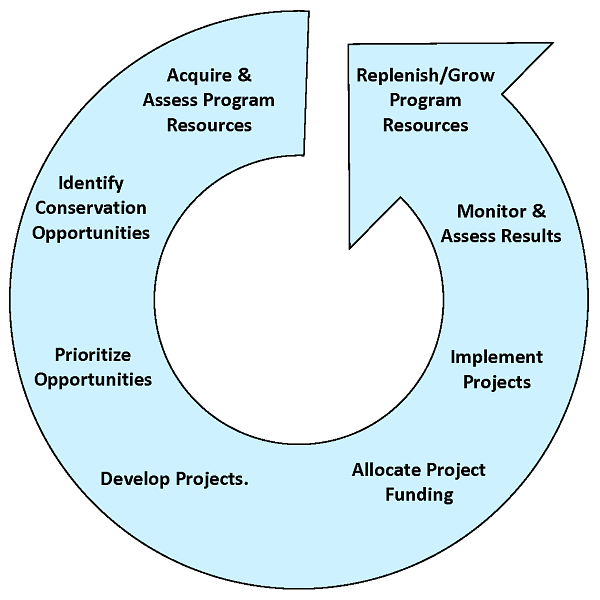The Strategic Energy Management Plan methodology summarizes the goals, actions, timeline and resource needs for effective operation of the UO enterprise Energy Management Program.
The STRATEGIC ENERGY MANAGEMENT PLAN (SEMP) CONCEPT
Methodology
Over the past 5-years, Campus Services/Facilities/Utilities has initiated use of SEMP to achieving significant levels of energy savings. This approach is based on the understanding that:
- The consequence of inaction is unmanaged growth in energy cost and risk.
- Existing energy cost cash flow can be used to boot-strap a comprehensive program to significantly reduce energy costs and risk over a number of years.
- Energy savings can be redirected back into energy management activities through a dedicated Energy Revolving Fund.
- Strategic energy management is a successful and well-established practice used by many large educational institutions throughout the country, and has proven to be the most successful means of improving control of risk and cost associated with utility use.
The SEMP approach has become successful because it provides a method for funding energy projects from existing energy budget levels and cash flows. Under this approach, energy efficiency efforts are generally categorized in three areas:
- Operation and maintenance (O&M) or Tune-up Measures. These are low cost improvements that can generally be implemented within normal operation and maintenance resources.
- Re-commissioning (RCx) Measures. These measures typically involve more cost and technical resources, yet still have a fairly short payback and normally generate significant levels of energy savings. In general, the RCx process involves a detailed diagnostics and testing phase, an implementation phase and a verification phase.
- Energy Efficiency Measures or Capital. These are more extensive, longer term capital intensive energy improvement projects that have more complex requirements for analysis, finance, design, planning and implementation. These types of projects may become more feasible when coupled with other building capital improvement or renewal projects.
Avoided utility costs (i.e., savings) engendered by early low cost measures are used to fund more expensive measures as energy savings accrue. As the plan progresses, measures become progressively less cost effective and additional investment is needed to implement capital intensive measures. Suitable planning of utility resource objectives and processes are captured in the SEMP Cycle.
SEMP Cycle
|
|
|
|
|
|
|
The core functions of the iterative strategic energy management cycle are illustrated in Figure below.

Projects with the best financial return are implemented first to accumulate savings and build resources for funding successive implementation of more capital intensive projects. This generally translates into a sequence of project implementation that begins with no-cost / low-cost Tune-up and O&M measures, progresses into more resource intensive and complex RCx measures and then takes on more expensive capital intensive measures after a base of savings has been developed.
NOTE: The preceding information are excerpts from the University's SEMP document available HERE.
